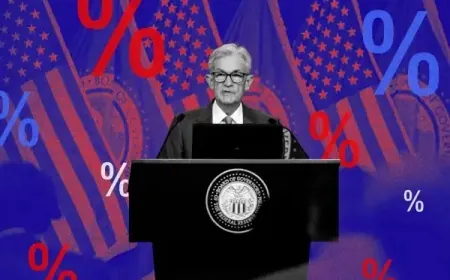China’s Export Orders Fall to 16-Month Low as U.S. Tariffs Trigger Trade Slowdown
China's export orders drop to a 16-month low as Trump's tariffs take a heavy toll, slowing manufacturing and rattling global trade.

Factory activity in China fell significantly in April, as rising U.S. tariffs weighed heavily on overseas demand for Chinese goods. New economic data confirms a noticeable contraction in export orders, underscoring the growing impact of the trade dispute on both manufacturing output and international commerce.
According to the latest release from China’s National Bureau of Statistics, the official manufacturing Purchasing Managers’ Index (PMI) dropped to 49.0 in April—its lowest level in 16 months. A reading below 50 signals contraction. A separate report from Caixin, which tracks private-sector firms more closely, showed a dip to 50.4 from 51.2 in March, reflecting softening conditions across small and mid-sized manufacturers .
The drop comes just weeks after Washington sharply raised tariffs on a broad range of Chinese imports, with duties now reaching up to 145% on some goods. In retaliation, Beijing imposed duties as high as 125% on selected U.S. products, while also tightening export controls on critical minerals used in high-tech industries such as electric vehicle batteries and semiconductors .
Business Slowdown Spreads to Port Operations and Global Logistics
The economic effects are spreading beyond China’s factories. At major shipping hubs like the Port of Los Angeles and Long Beach, inbound container volumes from China are expected to fall by more than one-third in May. Terminal operators have already canceled roughly 25% of scheduled vessel arrivals, according to shipping officials, which is putting pressure on warehouse operations and transport jobs across the West Coast .
Retailers in the U.S. who rely heavily on Chinese imports are now facing difficult decisions. Many had accelerated purchases in March to beat the tariffs, leading to a temporary surge in Chinese exports—up 12.5% year-over-year that month. But with new duties in full effect, companies like Walmart and Target are now re-evaluating sourcing strategies and supply timelines .
Retailers absorbing short-term cost increases may not be able to hold off price hikes for long. Several U.S. trade groups warn that everyday goods—ranging from shoes and apparel to electronics—will soon reflect higher import costs at checkout counters.
U.S. Consumers Start to Feel the Impact
Higher tariffs are already pushing up prices across several product categories. Based on current cost projections:
-
Imported shoes from China could see an 80% price increase compared to early last year
-
Apparel is rising by 60–70% depending on the material and brand
-
Smartphones, tablets, and laptops could cost 15–25% more by summer
Families and small businesses will likely be hit hardest, particularly those already struggling with inflation in groceries, rent, and utilities. The added strain from tariff-induced cost increases could lead to reduced spending in other parts of the economy.
Growth Forecasts Trimmed on Both Sides of the Pacific
China’s economy grew by 5.4% year-over-year in the first quarter of 2025, buoyed in part by companies rushing orders ahead of the tariff hike. However, several financial institutions have since downgraded their forecasts for the rest of the year. Capital Economics now expects China to grow only 3.5% in 2025—well below the government’s target of “around 5%.”
The U.S. is facing its own set of economic headwinds. The International Monetary Fund (IMF) recently lowered its global growth estimate for 2025 to 2.8%, down from 3.3% projected in January. The slowdown is being attributed in part to prolonged trade tensions, which are not only disrupting traditional supply chains but also deterring new investment .
Businesses Adjust to the New Trade Reality
Amid the uncertainty, manufacturers and importers are making changes to reduce their dependence on U.S.-China trade routes. Many firms are shifting production to Vietnam, India, and Mexico—countries less directly exposed to current tariff regimes. Others are renegotiating contracts and exploring ways to adjust product specifications in order to qualify for lower-duty classifications.
Shipping companies, meanwhile, are bracing for long-term disruptions. Some freight forwarders have begun advising clients to plan orders three to four months in advance, citing customs clearance delays and volatile shipping rates.
While officials in Beijing continue to express confidence in their ability to cushion the economy, the April data makes clear that trade pressures are starting to filter through to production lines, labor markets, and investment decisions. Analysts note that while China still maintains several stimulus options—such as tax rebates and lending support—external demand will remain a major concern in the second half of 2025.
Also Read: U.S. Tariffs Spark Market Fears as Trade War Grows with Canada, Mexico, and China





























































